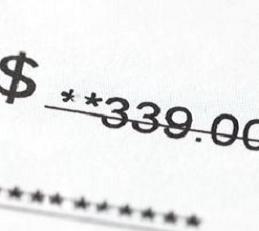Royalty agreement percentage
What is a royalty payment agreement? What percentage of royalties are there? Royalty percentage Agreeing on a royalty percentage is the most common approach when it comes to contracts and license agreements between the licensee and licensor.
This method tends to be more financially convenient for the licensee as the amount they pay reflects their current business situation. A royalty interest is the right to collect a stream of future royalty payments. Royalty Rates In most license agreements, royalty rates are defined as a percentage of sales or a payment per unit.
The many factors that can affect royalty rates include exclusivity of rights,. The agreement will also list the royalty rates and how often they are to be paid. This rule provides that you can typically receive around percent of the profits made when your product is sold. A royalty is compensation that the Grantor receives from the Grantee in return for the use of their property.
LIMA reports that the average royalty for art licensing agreements is between –. What you will find is that manufacturers that sell to mass retailers (Walmart, Target, etc.) are pressed pretty hard by the retailers to keep their costs down low. If using this approach, the agreement itself should indicate that the percent will be on the net sales or, alternatively, a price per unit of each licensed product sold. Specifically, the reported royalty rates account for percent, percent , and percent of gross, EBITDA, and EBIT margins, respectively.
Such a linear relationship suggests that the licensing market is efficient and cost structure and profitability across industries have been factored into the royalty rate negotiation. Furthermore, this royalty agreement will take precedence over any and all previous agreements including, but not limited to, any oral or written agreements between the Parties. PandaTip: In the “entire agreement ” section, the template states that this agreement shall be considered the only agreement concerning royalty payments for the listed properties.
Royalties are calculated by multiplying net sales by the royalty rate. Licensing contracts often. The royalty is calculated by applying the fixed percentage to the adjusted gross sales, traditionally on a monthly or sooner basis. It is often the simplest fee structure to administer, but might not always be the best method to ensure a proper balance for either the franchisor or the franchisee.
Generally, licensors require a royalty rate that falls within the range of to of the sublicensing income. Their stake usually amounts to not less than half of these profits. In rare cases, the licensee will be able to negotiate a rate split and apply their own royalty obligation to the sale of sub-licensed products.
Payment under licences often takes the form of royalties – regular payments which are generally a percentage of income generated by the licensee’s activities. This Standard Royalty Contract provides for such situations. The terms of this contract are sufficiently broad to cover a wide variety of subject matter. The payment amounts and frequency are discussed within the royalty agreement.
Royalty fees can also be a fixed amount based on the item, for example, a royalty payment of $is paid for every book sold. This Royalty Agreement is between a writer and a publisher for the payment of royalties for a written work. This agreement sets out the title of work, the assignment, transfer or sell of all copyrights in the work and the royalties’ percentage the publisher agrees to pay to writer.
Any Royalty not paid when due shall bear interest at a rate equal to the lower of (i) the highest rate permitted by applicable law, and (ii) one and one-half percent ( ) per month, compounded monthly.
A Royalty Agreement lets you determine how you property will be used and for how long. The royalty rate is the percentage of net sales to be paid by the licensee to the licensor.

Comments
Post a Comment